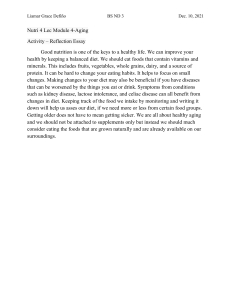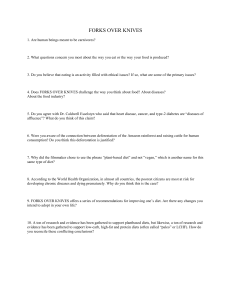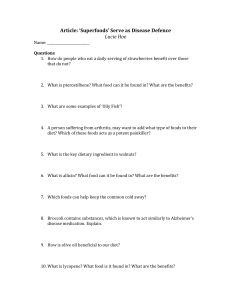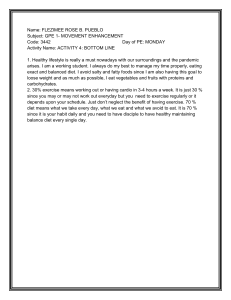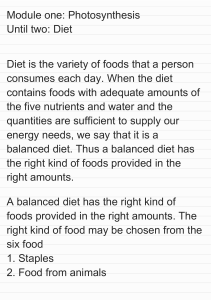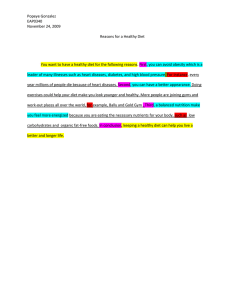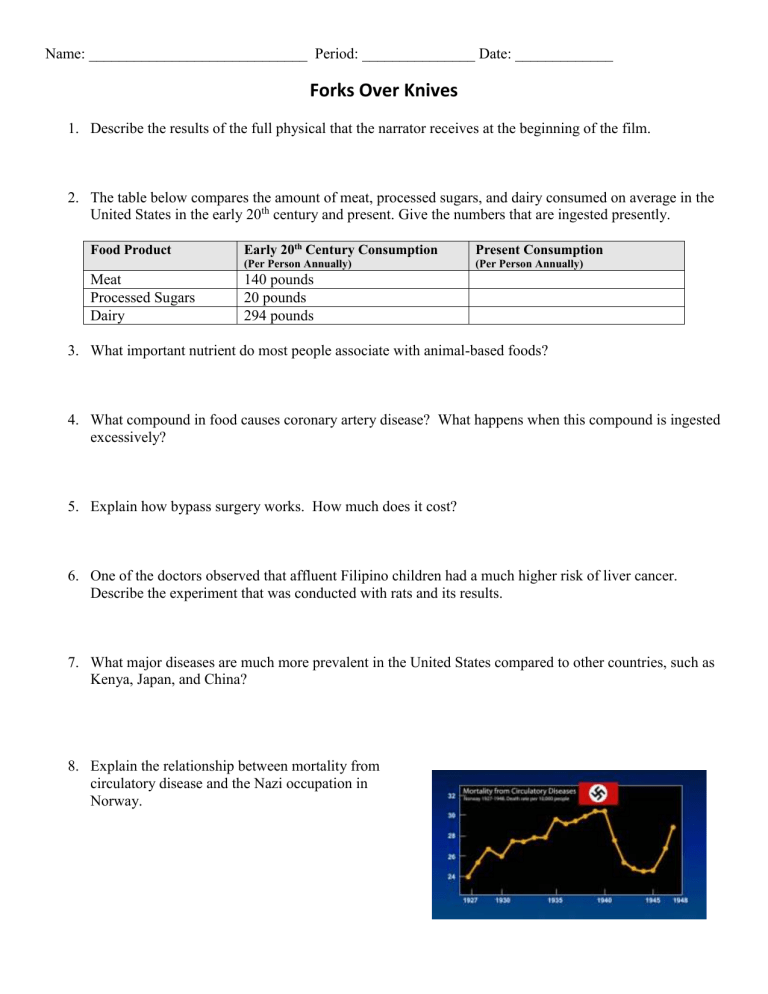
Name: _____________________________ Period: _______________ Date: _____________ Forks Over Knives 1. Describe the results of the full physical that the narrator receives at the beginning of the film. 2. The table below compares the amount of meat, processed sugars, and dairy consumed on average in the United States in the early 20th century and present. Give the numbers that are ingested presently. Food Product Meat Processed Sugars Dairy Early 20th Century Consumption Present Consumption (Per Person Annually) (Per Person Annually) 140 pounds 20 pounds 294 pounds 3. What important nutrient do most people associate with animal-based foods? 4. What compound in food causes coronary artery disease? What happens when this compound is ingested excessively? 5. Explain how bypass surgery works. How much does it cost? 6. One of the doctors observed that affluent Filipino children had a much higher risk of liver cancer. Describe the experiment that was conducted with rats and its results. 7. What major diseases are much more prevalent in the United States compared to other countries, such as Kenya, Japan, and China? 8. Explain the relationship between mortality from circulatory disease and the Nazi occupation in Norway. Name: _____________________________ Period: _______________ Date: _____________ 9. A different version of the rat/casein protein diet was conducted. Describe this experiment and its results. 10. Explain the relationship between processed foods, calorie density, and the sensation of physical fullness. 11. What are the three parts of the “motivational triad”, as shown in the example of the Great White Shark? a. Give an example of a modern stimulation that “hijacks” this triad. 12. A massive study of cancer rates conducted in China led to the production of the cancer atlas. What were the results from this study? 13. What is the relationship between endothelial cells, nitric oxide gas, and heart disease? a. How does a change to a plant-based diet affect this relationship? 14. What is the canary in the cardiovascular system coal mine? 15. Why are fruits and vegetables much harder to find in a typical school lunch? 16. Describe some of the biases in the university system, National Academy of Sciences, and USDA. 17. How is a diet heavy in animal-based foods damaging to the environment? 18. What health changes occurred with the narrator after several weeks on the new diet? Name: _____________________________ Period: _______________ Date: _____________ Quotes For each of the quotes below, explain what it means in the context of the documentary. “Let food be thy medicine” – Hippocrates "The doctor of the future will no longer treat the human frame with drugs, but rather will cure and prevent disease with nutrition." —Thomas Edison “He who takes medicine and neglects diet wastes the time of the doctor.” – Chinese proverb "One fourth of what you eat keeps you alive. The other three-fourths keep your doctor alive." – Egyptian hieroglyph Analysis Accepting dietary and health advice based on a single source (such as this documentary) is always dangerous. Read the “Forks Over Knives” Is the Science Legit? review available here: http://rawfoodsos.com/2011/09/22/forks-over-knives-is-the-science-legit-a-review-and-critique/ Choose and explain two significant claims made by the video that were either described incompletely or misleadingly according to the critique. Do you feel that the makers of this documentary have an agenda? Is there a possibility of bias here? What aspects of the video do you think are legitimate and worth incorporating into your lifestyle and diet? Give specific examples and data from the documentary and the critique.

